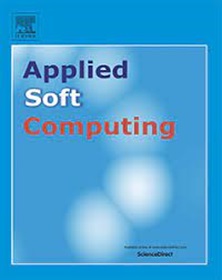揭示睡眠模式:利用自我关注的监督对比学习进行睡眠阶段分类
IF 7.2
1区 计算机科学
Q1 COMPUTER SCIENCE, ARTIFICIAL INTELLIGENCE
引用次数: 0
摘要
从 PSG 信号中了解睡眠阶段是诊断睡眠障碍的关键和首要步骤。本研究利用具有自我注意机制的监督对比学习来对睡眠阶段进行分类。我们提出了一种用于自动进行睡眠阶段分类的深度学习框架,它包括两个训练阶段:(1)特征表示学习阶段,在这一阶段中,特征表示网络(编码器)学习从脑电信号中提取特征;(2)分类网络训练阶段,在这一阶段中,预先训练好的编码器(在第一阶段中训练好)与分类器头一起针对分类任务进行微调。PSG 数据显示睡眠阶段分布不均匀,唤醒(W)阶段(约占总样本的 30%)和 N2 阶段(在 Physionet EDF-Sleep 2013 和 2018 数据集中分别约占总样本的 58% 和 37%)更为普遍,导致数据集不平衡。解决数据不平衡问题的方法是使用加权软最大交叉熵损失函数,为少数睡眠阶段分配更高的权重。此外,还采用了超采样技术(合成少数群体超采样技术(SMOTE)(Chawla 等人,2002 年)[1] )为少数群体类别生成合成样本。利用 Fpz-Cz 和 Pz-Oz 脑电图通道,在 Physionet EDF-Sleep 2013 和 2018 数据集上对所提出的模型进行了评估。其总体准确率达到 94.1%,宏观 F1 得分为 92.64,科恩卡帕系数为 0.92。消融研究表明,基于三重损失的预训练和超采样对提高性能非常重要。所提出的模型只需极少的预处理,无需大量的信号处理专业知识,因此非常适合临床医生诊断睡眠障碍。本文章由计算机程序翻译,如有差异,请以英文原文为准。
Unravelling sleep patterns: Supervised contrastive learning with self-attention for sleep stage classification
Sleep data scoring is a crucial and primary step for diagnosing sleep disorders to know the sleep stages from the PSG signals. This study uses supervised contrastive learning with a self-attention mechanism to classify sleep stages. We propose a deep learning framework for automatic sleep stage classification, which involves two training phases: (1) the feature representation learning phase, in which the feature representation network (encoder) learns to extract features from the electroencephalogram (EEG) signals, and (2) the classification network training phase, where a pre-trained encoder (trained during phase I) along with the classifier head is fine-tuned for the classification task. The PSG data shows a non-uniform distribution of sleep stages, with wake (W) (around 30% of total samples) and N2 stages (around 58% and 37% of total samples in Physionet EDF-Sleep 2013 and 2018 datasets, respectively) being more prevalent, leading to an imbalanced dataset. The imbalanced data issue is addressed using a weighted softmax cross-entropy loss function that assigns higher weights to minority sleep stages. Additionally, an oversampling technique (the synthetic minority oversampling technique (SMOTE) (Chawla et al., 2002)[1] ) is applied to generate synthetic samples for minority classes. The proposed model is evaluated on the Physionet EDF-Sleep 2013 and 2018 datasets using Fpz-Cz and Pz-Oz EEG channels. It achieved an overall accuracy of 94.1%, a macro F1 score of 92.64, and a Cohen’s Kappa coefficient of 0.92. Ablation studies demonstrated the importance of triplet loss-based pre-training and oversampling for enhancing performance. The proposed model requires minimal pre-processing, eliminating the need for extensive signal processing expertise, and thus is well-suited for clinicians diagnosing sleep disorders.
求助全文
通过发布文献求助,成功后即可免费获取论文全文。
去求助
来源期刊

Applied Soft Computing
工程技术-计算机:跨学科应用
CiteScore
15.80
自引率
6.90%
发文量
874
审稿时长
10.9 months
期刊介绍:
Applied Soft Computing is an international journal promoting an integrated view of soft computing to solve real life problems.The focus is to publish the highest quality research in application and convergence of the areas of Fuzzy Logic, Neural Networks, Evolutionary Computing, Rough Sets and other similar techniques to address real world complexities.
Applied Soft Computing is a rolling publication: articles are published as soon as the editor-in-chief has accepted them. Therefore, the web site will continuously be updated with new articles and the publication time will be short.
 求助内容:
求助内容: 应助结果提醒方式:
应助结果提醒方式:


